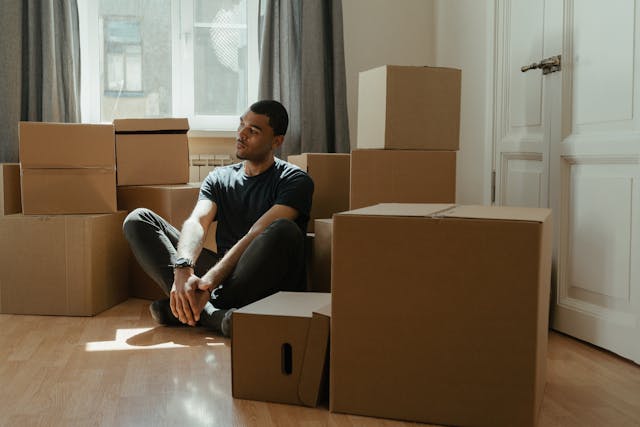Introduction: How to Fix Common Household Problems
Every homeowner or renter has encountered a handful of common household problems. Whether it’s a leaky faucet, a clogged drain, or creaky floors, these issues can cause frustration. Fortunately, most of these problems are fixable with just a bit of knowledge and a few essential tools. This article will provide a comprehensive guide on how to fix common household problems, helping you save money, time, and the hassle of calling in a professional.
Fixing common household problems doesn’t have to be difficult. By understanding the basics of home maintenance and the best methods to tackle common repairs, you can address these issues quickly and efficiently. From plumbing and electrical issues to simple repairs around the house, there’s no shortage of DIY solutions. This guide is designed to walk you through the most frequent problems that homeowners face, providing step-by-step instructions on how to fix them.
Having the ability to fix common household problems yourself is an empowering skill. It not only saves you the cost of hiring repair professionals but also allows you to take control of the comfort and functionality of your living space. Whether you are a seasoned DIY enthusiast or someone who’s never picked up a tool before, this guide will offer solutions that cater to all skill levels.
Now, let’s dive into the most common household problems and explore how to fix them effectively.
Fixing Common Household Plumbing Issues
1. Leaky Faucets
A leaky faucet is one of the most common household problems that can waste water and drive you crazy. It is often caused by a worn-out washer, O-ring, or cartridge. To fix this issue, start by turning off the water supply and removing the handle. Depending on the type of faucet, you may need to replace a worn-out part. You can purchase a replacement kit at your local hardware store.
2. Clogged Drains
Clogged drains are another prevalent issue in most homes. They are typically caused by the accumulation of hair, grease, soap, or food particles. To fix a clogged drain, start by using a plunger to create suction. If that doesn’t work, you can use a drain snake or a chemical drain cleaner. Always follow up with hot water to ensure the clog is cleared.
3. Running Toilet
A running toilet is not only annoying but can also waste gallons of water. The issue is typically caused by a malfunctioning flapper valve or a stuck float. To fix a running toilet, remove the tank lid, check the flapper, and make sure the float is at the correct height. Replacing the flapper or adjusting the float can resolve the issue.
4. Low Water Pressure
Low water pressure can be caused by a variety of factors, including a clogged aerator, a leak in the pipes, or a problem with the water supply. Begin by checking the faucet aerator for debris and cleaning it out. If that doesn’t fix the issue, you may need to inspect the plumbing system or call a professional.
How to Fix Common Household Electrical Problems
1. Flickering Lights
Flickering lights can be caused by a loose bulb, faulty switch, or an issue with the wiring. Start by tightening the bulb and checking for any visible signs of wear in the fixture. If the flickering persists, it’s important to check the circuit breaker and inspect the wiring for any damage. In some cases, it’s best to contact an electrician if you suspect an electrical fault.
2. Power Outage
A sudden power outage in your home can often be fixed by resetting the circuit breaker. If the outage is localized to a specific room or appliance, check for any tripped breakers. Reset the breakers by turning them off and then back on. If the issue continues, contact your utility provider or an electrician.
3. Overloaded Outlets
Overloading outlets is a common cause of tripped breakers. To fix this problem, avoid using too many devices at once on a single outlet. If you have frequent issues with overloading, consider installing additional outlets or using a power strip with surge protection.
Fixing Common Household Repair Problems
1. Squeaky Doors
A squeaky door can be irritating, but the fix is simple. Most squeaks come from the hinges, which need lubrication. Apply a few drops of oil to the hinges and open and close the door several times to distribute it evenly. If this doesn’t resolve the issue, you may need to replace the hinges.
2. Cracked Walls or Ceilings
Cracked walls or ceilings are often a result of settling or moisture. Small cracks can be repaired using spackle or joint compound. Simply apply the compound to the crack, smooth it out, and allow it to dry before painting over it. For larger cracks, you may need to use mesh tape and drywall compound for a more durable repair.
3. Clogged Gutters
Clogged gutters can lead to water damage and leaks in your roof. To fix this issue, use a ladder to remove debris from the gutters. You can also use a garden hose to flush out any remaining dirt. Regularly cleaning your gutters will prevent buildup and keep your home’s drainage system functioning properly.
Fixing Common Household Heating and Cooling Issues
1. Dirty Air Filters
Dirty air filters are a common cause of HVAC system inefficiency. They can restrict airflow and make your heating or cooling system work harder. To fix this issue, replace the air filter every few months or clean reusable filters regularly. This will improve the system’s efficiency and extend its lifespan.
2. Thermostat Problems
If your thermostat is not functioning properly, your home’s temperature may become uncomfortable. First, check the battery or power source to ensure it’s working. If the problem persists, recalibrate the thermostat or replace it if it’s outdated.
FAQ: Fixing Common Household Problems
1. How can I prevent plumbing issues in my home?
Regularly check for leaks, avoid flushing non-degradable items, and ensure your pipes are well-maintained to prevent issues.
2. What should I do if my electrical outlets are not working?
Check the circuit breaker for any tripped breakers, and ensure the outlet is wired correctly. If problems persist, contact an electrician.
3. How can I prevent clogged drains?
Use drain covers to catch debris, avoid pouring grease down the drain, and periodically flush your drains with hot water.
4. When should I call a professional for household repairs?
If you encounter a problem that requires advanced knowledge, such as electrical issues or extensive plumbing repairs, it’s best to consult a professional.
For more detailed information on how to maintain your home, visit this expert guide.
Conclusion: How to Fix Common Household Problems
Knowing how to fix common household problems is an essential skill for homeowners. From leaky faucets and clogged drains to flickering lights and squeaky doors, these issues are manageable with the right tools and knowledge. By following the steps outlined in this guide, you can address most household repairs without needing to hire a professional.
Regular maintenance and early intervention are key to avoiding more significant and costly repairs in the future. Now that you’re equipped with the knowledge to fix common household problems, you can confidently tackle repairs and keep your home in top condition.

Share this:
- Click to share on Facebook (Opens in new window) Facebook
- Click to share on X (Opens in new window) X
- Click to share on LinkedIn (Opens in new window) LinkedIn
- Click to share on Reddit (Opens in new window) Reddit
- Click to share on X (Opens in new window) X
- Click to share on Threads (Opens in new window) Threads
- Click to share on WhatsApp (Opens in new window) WhatsApp




